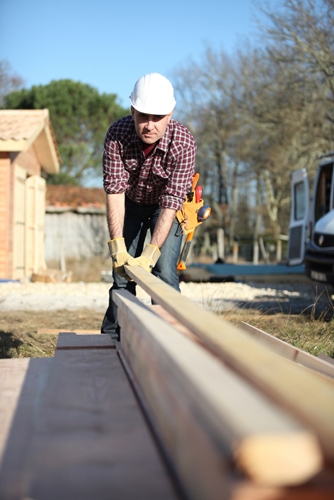
People shopping for floor plans in 2014 may find themselves in good company. Despite a slight dip in housing starts in December compared to November, it seems as if the housing production market will continue to grow in the coming year, with some cities already showing historic highs in terms of home building.
Spikes and improvements
The U.S. Department of Housing and Urban Development recently released statistics concerning the number of new privately owned housing units authorized in permit-issuing places over the past year, as well as statistics on the different phases of construction for new privately owned units. Nationally speaking, the number of permits and housing starts saw a decrease from November to December last year, with a 3 percent and a 10 percent dip respectively. However, November marked an unusual spike in 2013's overall trend.
Compared to December 2012, this last month actually saw a 4 percent increase in terms of authorized permits. Looking at yearly averages, there was a 17.5 percent improvement between 2012 and 2013, with 974,700 housing units last year over the 829,700 issuances in the previous year.
These statistics saw a roughly similar pattern in terms of housing starts, as there was a 1.6 percent increase in December 2013 compared to December 2012, and, in terms of yearly change, an 18.3 percent increase.
Breaking down the numbers
These national totals included multi- as well as single-family homes, but the statistics also showed improvements across differently sized housing units. Single-family homes – the largest sector of housing construction – also saw a percentage increase in permits authorized from year to year, as well as the number of homes under construction. Between 2012 and 2013, there was actually a 19 percent increase in single-family permits, roughly 1.5 percent higher than the total average. Housing starts, however, saw a roughly 3 percent dip for single-family homes. These numbers were then further broken down by national regions, all of which saw a yearly increase in issued permits.
While the December dip may seem to be a sign that the housing market is slowing, Rick Judson – chairman of the National Association of Home Builders – noted that December's numbers were merely a return to trend after a particularly robust November, and that it was the third-highest monthly level of production in 2013, according to the NAHB. In general, that trend seems to be positive.
"Last year was a good year for home building, with overall production up 18 percent from 2012," said Chief Economist David Crowe of the National Association of Home Builders. "As pent-up demand is unlocked and the labor market improves, we anticipate that 2014 should be an even better year for home construction. That's good news for economic growth, as each new home that is built creates three full-time jobs and contributes to the tax base of local communities."
Cities of growth
While those statistics looked at general trends across regions, USA Today recently reported that some cities are seeing particularly robust improvements. Major cities in Texas in particular have reached 30-year average levels of single-family home building, specifically in Houston and Austin. Other cities that saw improvements include Nashville, San Antonio, Dallas and Jacksonville. When including multifamily construction, San Francisco, New York Seattle, Boston and Miami also reached or surpassed their own historic building levels.
Apparently some cities were able to reach those numbers because they hadn't already been overbuilt. Yet, according to the news source, economists are citing available land, pent-up demand, strong economies and good job growth as other reasons for the improved numbers.